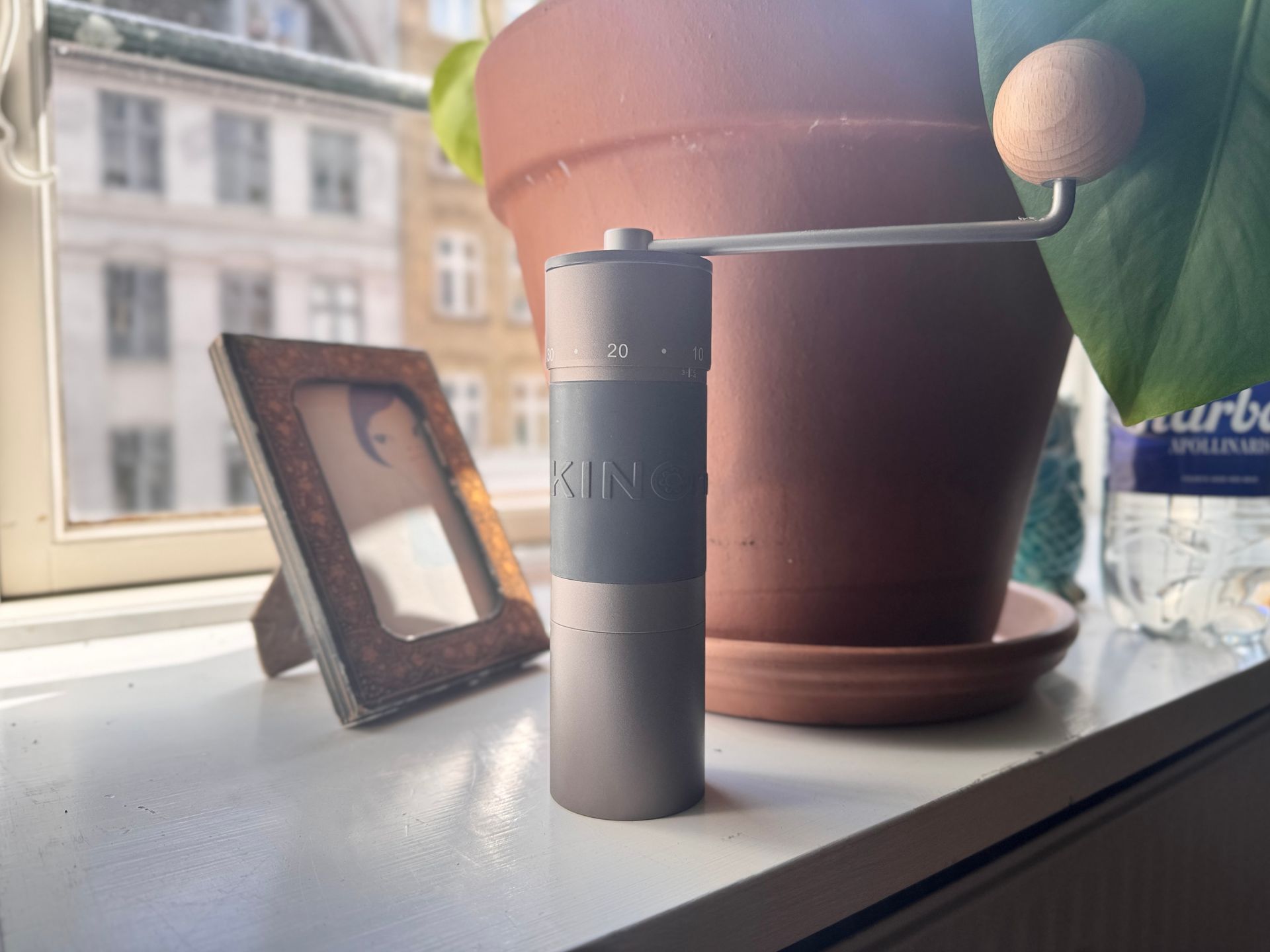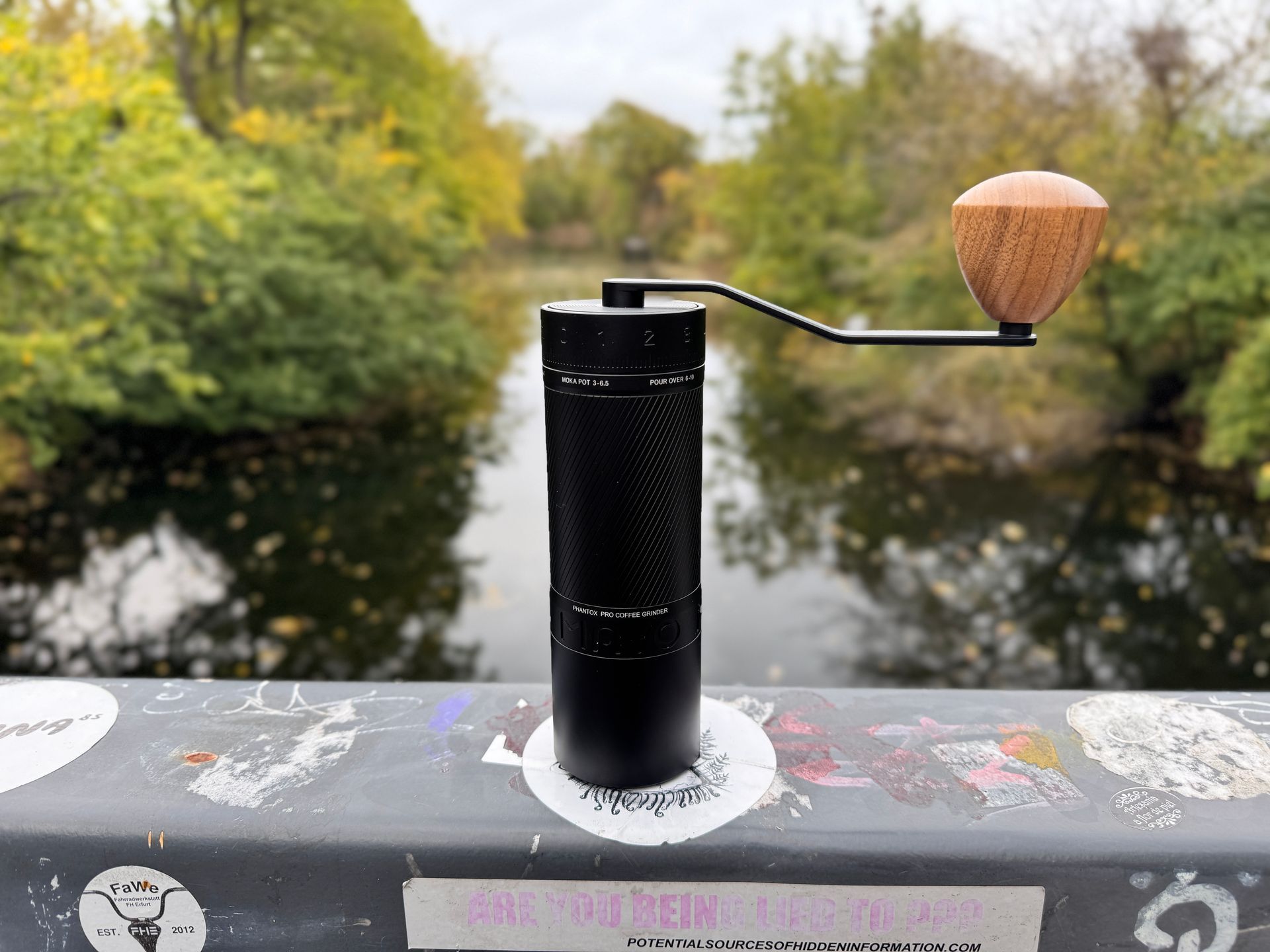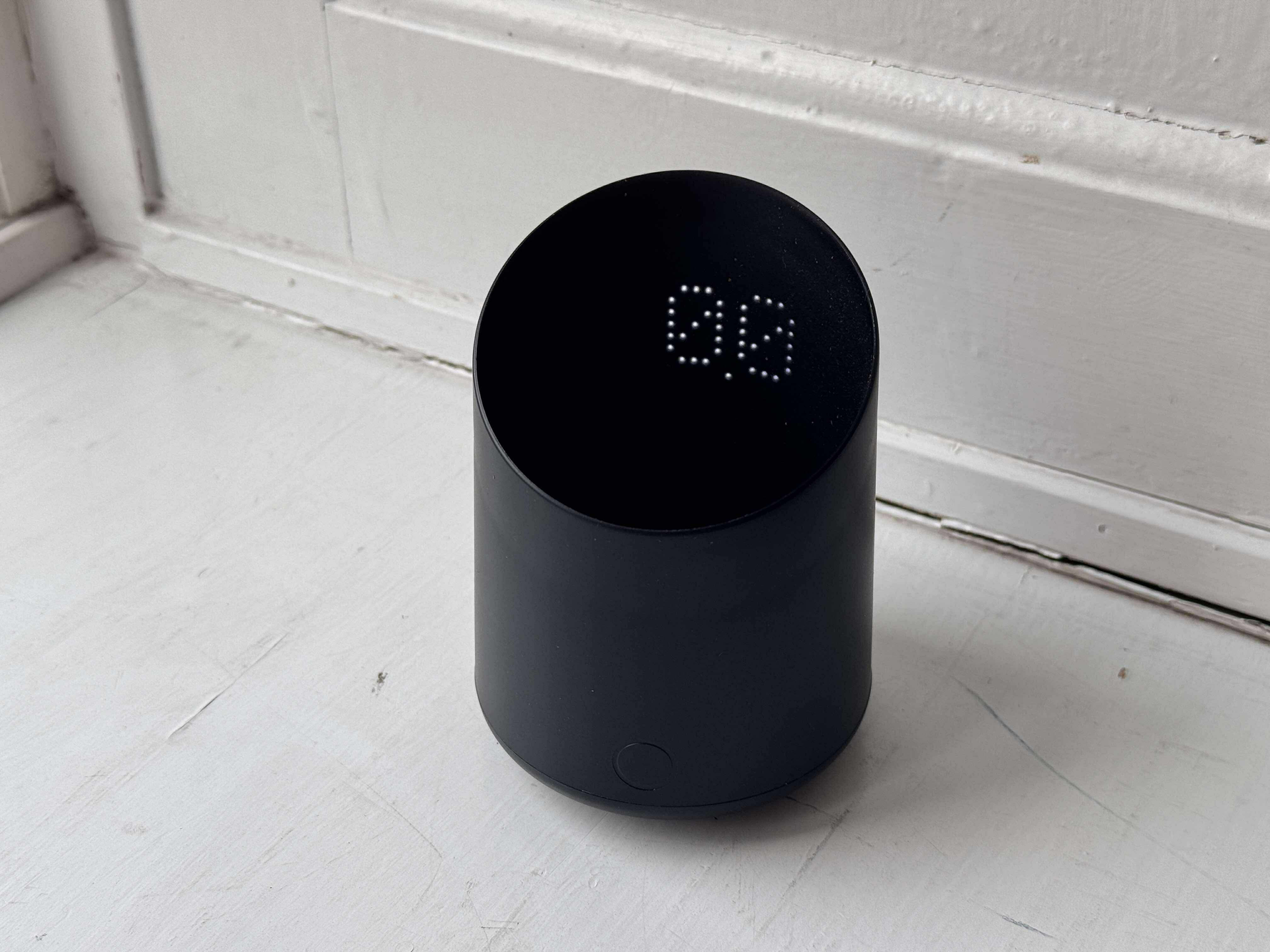KINGRINDER K6
BENJAMIN SAND
If you want a hand grinder that punches up for pour-over (and can dabble in espresso), the KINGrinder K6 keeps popping up. Big 48 mm burrs, tiny 16 micron steps, external adjustment collar, and a price that often undercuts the usual suspects.
As a traveller, the main pain point I encounter is which handgrinder to take with me on long trips. My main consumption is light-roast coffee, so finding a grinder that can accentute the bright acidity, sweetness and juicy flavours is problematic. The other consideration is, of course, the size and weight.
There are plenty of grinders out there that can do a decent job, but most end up with a rather flat tasting cup. After a lot of research online I reached out to Kin who were kind enough to send me the K6 for testing.
After a month of using it on the road, at home, in the park, I have finally found what I'm looking for. But first, let's rewind.

Who Are Kingrinder?
KINGrinder is a relatively young Taiwanese brand that’s carved out a space in the hand-grinder market over the last few years. Instead of leaning into hype or luxury branding like Comandante or Kinu, they’ve built their reputation on value and practicality.
All of their grinders (K0 through K6) are made in China but designed and marketed out of Taiwan. The naming is straightforward: the higher the number, the more premium the features. The K4 and K6, for example, use larger burrs and external adjustment collars, while the entry-level K0/K1 keep things simple and affordable.
The company found traction through Reddit, coffee forums, and YouTube reviewers rather than glossy ad campaigns. A big selling point has been price-to-performance: you can get near-premium grind consistency for filter brewing without spending Comandante money.
In short, KINGrinder is a no-frills, enthusiast-focused brand. They’re not chasing lifestyle marketing — they’re chasing home brewers who care about microns, clarity, and getting good cups without wrecking their budget.

Testing
If your main game is V60/Kalita/Chemex and you want clarity with good body without overspending, the K6 hits a sweet value/precision combo. It’s not flawless, the handle setup trips people up, and espresso at light roasts is challenging, but for daily filter, it’s a lot of grinder for the cash.
I’d call it a “buy with eyes open,” and keep a white O-ring and small brush handy.
Quick Comparison: KINGrinder K6 vs K4 & Others
| Model | Strengths | Notes |
|---|---|---|
| K6 | Wide range, precise, fast, consistent | Best pick for pour-over |
| K4 | Good for espresso & filter, durable | Better on darker roasts |
| K1 | Affordable, solid for pour-over & press | Small capacity, slower for espresso |
The Positives
- Tasty cups for the money. The K6 keeps showing up as a grinder that punches above its price. Brews come out consistent and clean, with enough clarity for filter and even espresso that’s more than passable.
- Dial-in is easy. The external collar and 16 µm clicks make it straightforward to tweak recipes without guesswork. You can feel confident adjusting 2–4 clicks at a time.
- Solid build. The aluminium body, stainless burrs, and overall heft (~630 g) feel solid in hand. Machining quality is better than you’d expect at this price point.
- Plenty of range. Sweet spot for pour-over is around 90–120 clicks, but you’ve still got room on either side for coarser brews or even dialing down to espresso.
- Drill-ready. If you’re ever in a rush, the 1/4″ hex lets you hook up a drill and power through beans.
- Third-party praise. More than one publication has put it forward as the best budget hand grinder under £100, which matches what everyday users keep saying.
The Negatives
- Handle / cap quirks. The handle has a habit of feeling loose, and the cap can pop off until you get the O-ring setup right. First-time users often run into this. I found it difficult, if I left the O-ring on without the black silicone ring, then the handle doesn't sit tight to the grinder (see photo below), but if you try add the O-ring together with the black silicone ring, then the O-ring gets pulled off everytime you open the lid. It is definitely an issue they need to address because looking online at feedback forums, there are many people who mention this.
- Top-heavy feel. Because of the design, it can feel a little wobbly if you’re not holding it firmly when dosing or grinding. This is especially true after the new handle was launched with the straight arm, as the angled arm had a lower centre of gravity.
- Occasional QC issues. Some owners report burr rub, jammed adjusters, or misalignment. Most cases are fixable with reassembly or small tweaks, but it’s worth knowing.
- Espresso effort. Yes, it can grind fine enough, but pulling light-roast espresso is a serious workout. If you’re making multiple shots daily, you might want a motorized solution.
- Instructions. The provided instruction card is extremely confusing, so it's better to try find videos on youtube about cleaning and dismantling the grinder.
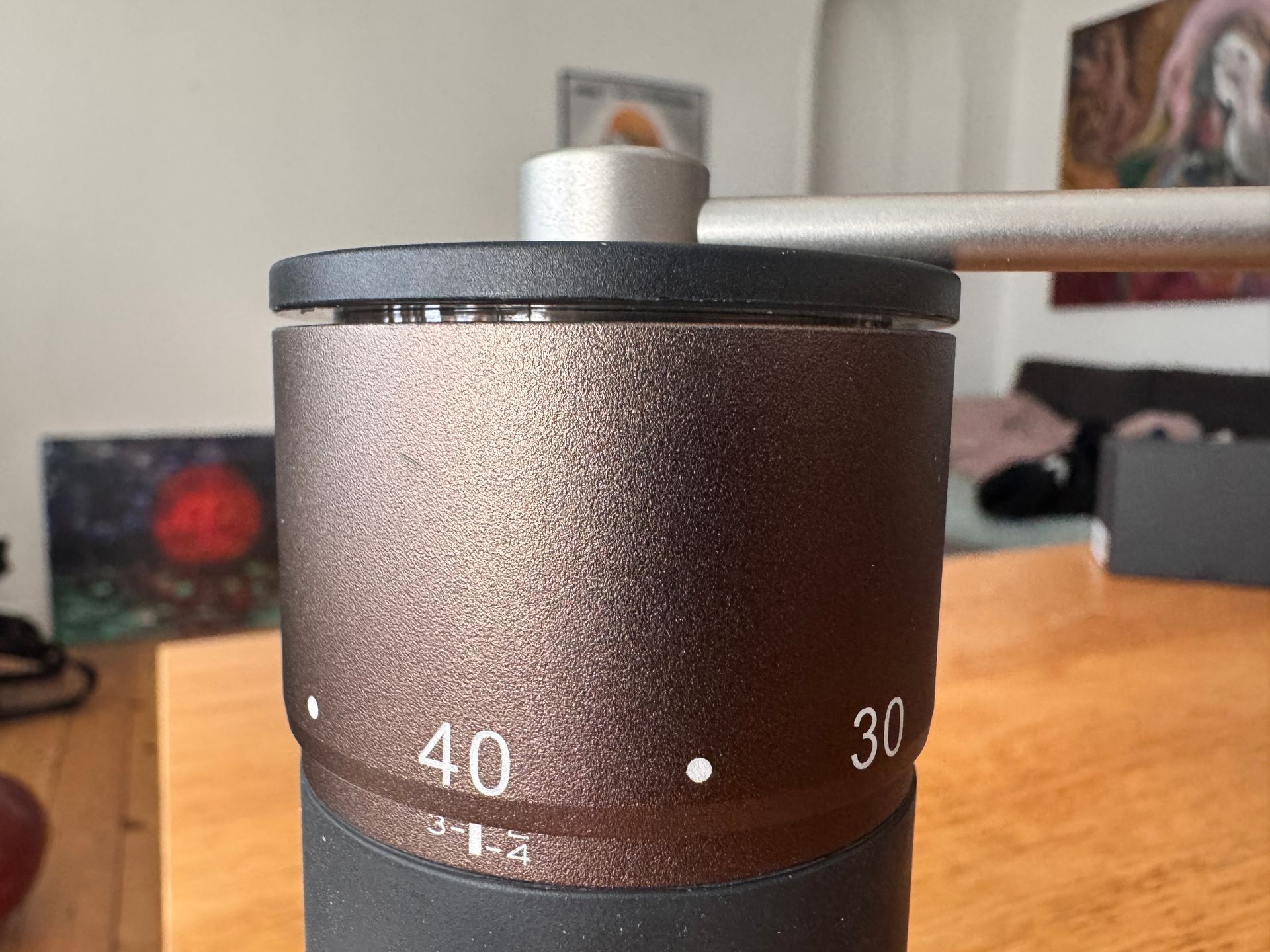
The lid without the rubber gasket doesn't sit totally flat, but if you put the rubber gasket on it won't pull off without falling out, even with the white o-ring on. So this is a challenging aspect of the K6. It does work, it just feels like this is one thing they could improve on in the future.
| Spec | Detail |
|---|---|
| Burr | 48 mm stainless, heptagonal |
| Adjustment | External collar |
| Step size | ~16 µm per click |
| Clicks / round | 60 |
| Capacity | 30–35 g beans |
| Dimensions | ~170–180 × 55 mm |
| Weight | ~630–645 g |
| Body | Aluminium alloy |
| Drill-ready | Yes, 6.35 mm (1/4″) hex |
| Made in | China (brand: Taiwan) |
| Price range | ~£99–£140 (varies) |
Tips
- Swap the O-ring. Out of the box it comes set up for drill use with a black O-ring. For manual grinding, swap in the white O-ring on the handle groove. That simple change keeps the handle and cap from falling off.
- Baseline settings. For pour-over, start around 90–110 clicks. That’s the range most people land in before fine-tuning. I found a good level was 95 for light-roast chocolate-profile beans, and 105-110 for more acidic, bright coffee.
- Tame static. A tiny spritz of water before grinding (RDT) keeps grounds from clinging. Combined with the aluminium catch cup, this keeps mess to a minimum.
- Keep it clean. The grinder comes apart with the allen-key provided, but this can be quite a job to get it dismantled and re-assembled. The instructions are very confusing.
- Fixing burr rub.
If you notice scraping or binding, try adjusting coarser, reseating the burrs, or checking the circlip. A careful reassembly usually sorts it.
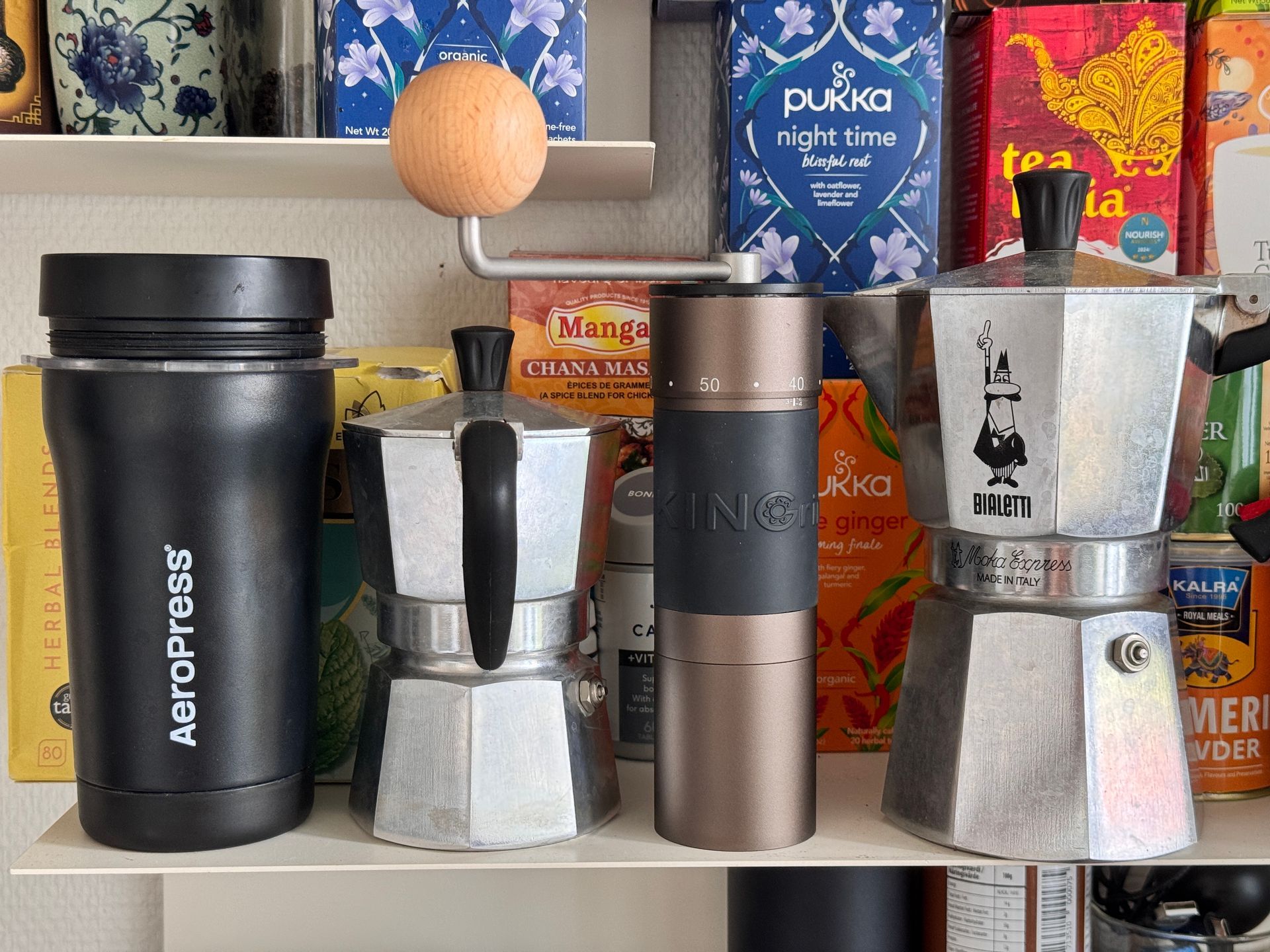
Final Thoughts
For someone who travels often and drinks mostly light-roasted coffee, I can see the K6 becoming part of my luggage. The weight is not too bad, the size a little bigger than the Timemore C3 series, but then again you are getting more speed on the grind. The aesthetics are very stylish, and apart from the issue with the O-ring, the grinder works exceptionally well.
I have had some very tasty, rounded, flavoursome cups of coffee. It may not produce the brightness and clarity you'll find on the 1Zpresso K-Ultra, or Comandante, but the price is extremely competitive, so in my opinion this is the better grinder to go for.
If you want to purchase one, you can click
here. This is not an affiliate link, The Mouth does not earn any commission:

